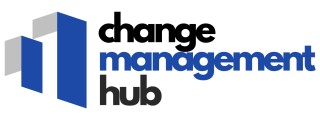-large-teaser.webp)
Understanding Lean Change Management
Exploring the Intersection of Lean and Change Management
Embracing lean principles in change management requires a nuanced understanding of both fields. At its core, lean change management is about creating a more efficient change process by adopting lean methodologies, traditionally used in manufacturing and software development, and adapting them to organizational change. This approach aims to streamline the way change is managed, focusing on reducing waste and maximizing value delivered to the organization. Lean change management encourages the use of tools such as the change canvas to map out strategies visually and foster a feedback-driven environment where insights from stakeholders shape the path forward. As a change agent, you employ agile methodologies to facilitate agile transformations within your organization. The lean model emphasizes continuous improvement, a stark contrast to static or outdated management models that don't evolve with time. In many ways, lean principles complement agile approaches, creating a synergy that enables organizations to adapt quickly and efficiently to change. This synergy is particularly evident in environments that prioritize a lean agile mindset, where teams strive to optimize processes and strengthen collaboration among change managers, change teams, and stakeholders. For organizations starting their lean journey, understanding the roles within the change management process is crucial. An informed view of how roles such as project managers and scrum masters intersect within these frameworks can aid in shaping a more adaptive change process. For more insights into these roles, you can explore understanding the roles of project manager vs scrum master. The transition to a lean approach in change management isn't devoid of challenges, but it offers a pathway towards a more agile, responsive, and efficient organization. Engaging with this methodology can yield significant benefits, aligning with the principles of lean startup and organized around key tenets that drive success in digital product development and beyond.Key Principles of Lean Change Management
Essential Components of Lean Change Approaches
- Continuous Improvement: At its core, lean change management emphasizes the importance of constant enhancement and refinement. This principle encourages organizations to consistently evaluate their existing processes and seek opportunities for betterment, fostering an environment of perpetual growth and development.
- Feedback-driven Processes: Feedback plays a critical role in lean change. By prioritizing input from various stakeholders, teams can adapt and evolve their strategies, ensuring that changes align with the organization's goals and the needs of its people. A feedback-driven approach is essential for cultivating agility within the change process.
- Lean Canvas Utilization: The lean canvas model acts as a strategic tool to visualize the change process. By mapping out key elements such as customer segments, value propositions, and channels, organizations can better align their change management objectives with overall business strategy.
- Agile Integration: Emphasizing the agile change methodology within lean frameworks helps teams to maintain flexibility and responsiveness. Agile transformations allow teams to iterate rapidly and pivot their approaches when necessary, resulting in more effective and efficient change implementations.
- Team-centric Strategies: Empowering the change team is essential to the success of lean change management. By supporting team members through agile coaching and leveraging the insights of change agents and managers, organizations can drive more meaningful and sustainable change.
- Course Correction Mechanisms: Lean principles advocate for robust mechanisms that allow for course corrections when facing unforeseen challenges. By embedding these mechanisms into the change management model, organizations can more easily navigate complexities and sustain positive momentum.
- Lean Agile Synergy: The integration of lean startup philosophies with agile methodologies creates a powerful synergy. This combination supports innovative product development and ensures that digital products continuously meet evolving market demands. For more insights into the practical application of this synergy, consider exploring navigating agile project management in global industries such as coffee: here.
Implementing Lean Change Management in Organizations
Starting with Lean Change Management
Implementing lean change management in an organization requires a strategic approach that aligns with the core principles of lean. The process begins with understanding the unique needs of the organization and tailoring the change model to fit these requirements. This involves a thorough analysis of existing processes and identifying areas where lean principles can be applied to enhance efficiency and effectiveness.
Building a Change Team
Assembling a dedicated change team is crucial. This team should consist of change agents and managers who are well-versed in both lean and agile methodologies. Their role is to facilitate the change process, ensuring that it is both feedback-driven and aligned with the organization's goals. The team should also be equipped to handle any resistance to change, using insights from agile coaching to guide the organization through the transition.
Utilizing Lean Tools and Techniques
Incorporating tools such as the change canvas and lean coffee sessions can help in visualizing the change process and fostering open communication among team members. These tools encourage continuous improvement and provide a platform for feedback, which is essential for refining the change strategy. The lean startup approach can also be integrated to test new ideas quickly and efficiently, minimizing risks and maximizing learning.
Feedback and Continuous Improvement
Feedback is a cornerstone of lean change management. It is vital to establish mechanisms for collecting and analyzing feedback from all stakeholders, including team members and end-users. This feedback loop helps in making informed decisions and adjustments to the change strategy, ensuring that the process remains agile and responsive to the organization's needs.
Leveraging Digital Tools
In today's digital age, leveraging software development and digital product tools can significantly enhance the change management process. These tools can streamline communication, track progress, and provide real-time data that supports decision-making. For organizations looking to enhance their supplier performance, innovative management software can be a valuable asset. For more insights, visit enhancing supplier performance with innovative management software.
Challenges in Lean Change Management
Overcoming Barriers in Lean Change Management
Implementing lean change management within an organization can be a complex endeavor, often fraught with challenges that require careful navigation. Understanding these obstacles is crucial for change managers and teams aiming to foster a culture of continuous improvement and agile transformations.
One of the primary challenges is resistance to change. People are naturally inclined to stick to familiar processes and may be skeptical of new approaches. This resistance can be mitigated by involving team members early in the change process, ensuring they understand the benefits of lean principles and how these changes will positively impact their roles.
Another significant hurdle is the alignment of lean principles with existing organizational structures. Traditional management models may not easily accommodate the flexibility and adaptability required by lean and agile methodologies. Organizations must be willing to adapt their structures to support a more feedback-driven and iterative approach.
Communication breakdowns can also impede the successful implementation of lean change management. Clear, consistent communication is essential to keep everyone informed and engaged. Utilizing tools like the change canvas and lean coffee sessions can help facilitate open dialogue and ensure that feedback is continuously integrated into the change process.
Resource constraints, both in terms of time and budget, can also pose significant challenges. Lean change management requires an investment in training and agile coaching to equip change agents with the necessary skills and insights. Organizations must be prepared to allocate resources to support these initiatives, even if it means reprioritizing other projects.
Finally, measuring the impact of lean change initiatives can be difficult. Traditional metrics may not accurately reflect the benefits of lean and agile transformations. Organizations should develop new metrics that align with lean principles, focusing on value delivery and customer satisfaction rather than just output.
By addressing these challenges head-on, organizations can create a more resilient and adaptable change management model that supports their long-term goals.
Case Studies of Successful Lean Change Management
Real World Success: Lean Change Management in Action
Organizations across various industries have embraced lean principles with transformative results. By leveraging agile change management strategies, these companies have not only streamlined processes but also enhanced their adaptability in the ever-evolving market landscape.
One leading global company implemented a feedback-driven approach to their change management model by integrating a lean change canvas. This tool empowered the change team to visualize the change process from start to finish while continuously incorporating feedback. As a result, the team was able to pivot their digital product offerings efficiently, aligning with customer needs and expectations swiftly.
In another case, a well-renowned organization utilized lean coffee meetings to engage their teams, providing a platform for change agents and change managers to exchange insights and strategies. This collaborative environment fostered a culture of continuous improvement, boosting team morale and productivity.
Additionally, in the realm of software development, companies have successfully adopted lean startup principles. By starting with a minimum viable product and iterating based on customer feedback, they minimized waste and optimized resources during the change process. Agile coaching facilitated seamless transitions for teams, particularly during large-scale agile transformations that required a unified management approach.
These case studies illustrate the powerful impact of lean agile methodologies in organizational change. Implementing these strategies can lead to not only successful product launches but also sustained, long-term growth. Real-world examples continue to shape the field, providing valuable insights for managers looking to adopt a lean management model.













